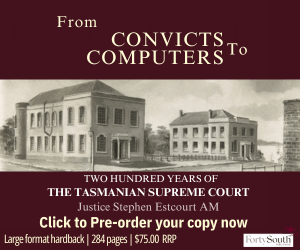In the recent District Court case of Beynon v Blackledge [2020] QDC 286, the plaintiff brought proceedings against the defendant claiming damages for defamation arising out of two separate publications.
The publications related to two emails that were sent to various residents in a body corporate scheme. The publications were discovered by the plaintiff in the course of non-party disclosure made in separate District Court proceedings. The use of such documents, therefore, is prima facie in breach of the Harman undertaking.1
The Harman undertaking is an implied undertaking to the court that documents obtained as a result of the compulsory process of the court will only be used for the purpose for which they were disclosed, and not for a collateral or ulterior purpose.2 Release of said undertaking may only be given by leave of the court.3
Accordingly, the plaintiff sought leave to use the documents.
Issue
The key issue for consideration by the court was whether it was in the interests of justice to release the plaintiff from the implied undertaking, so that the documents could be used for a purpose other than that for which they were disclosed.
Issue considered
In consideration of the issue, the court observed that discretion to release a party from the implied undertaking is to be determined on the facts of each individual case.4 Moreover, a party will not be released from the implied undertaking unless special circumstances arise that do not occasion injustice to the person giving discovery.5
Ultimately, the court found that it was in the interests of justice to release the plaintiff from the implied undertaking. In forming this conclusion, the court provided the following reasons:
- The documents produced pursuant to the notices of non-party disclosure were the very foundation of the plaintiff’s case and critical to achieving justice in the present case.
- As the documents were obtained from non-parties rather than the defendant, there was no real invasion of privacy or confidentiality of the non-parties and releasing the plaintiff from the undertaking did not detract from, or otherwise undermine, the encouragement of full and frank compliance with practices and procedures of the court.
- The present action was not being taken against those non-parties.
- The persons producing the documents had been informed of the present application and provided with the materials. One had indicated their consent to the document being used. The other did not meaningfully respond, but did not in terms resist its use.
- The email obtained from the latter party had been exhibited to a document filed in court in the other proceedings. In that sense, it could be regarded as being somewhat in a public forum, in that court files are liable to be searched by the public.
- There was no prejudice to either of those non-parties if the undertaking was released.
- Both documents were copied to a number of other recipients and neither contained commercially sensitive information or personal or confidential data relating to any person.6
Liam O’Shaughnessy is an Ethics Clerk in the QLS Ethics and Practice Centre. This article has been approved by Grace van Baarle, Manager and Ethics Solicitor, QLS Ethics and Practice Centre.
Footnotes
1 See Harman v Secretary of State for the Home Department [1983] 1 AC 280.
2 Beynon v Blackledge [2020] QDC 286, [2]. See also Hearne v Street [2008] 235 CLR 125, 154 [96].
3 Hearne v Street [2008] 235 CLR 125, 154 [96].
4 Beynon v Blackledge [2020] QDC 286, [16], [20].
5 Ibid [20], quoting Crest Homes Plc v Marks [1987] 1 AC 829, 860 (Lord Oliver).
6 Beynon v Blackledge [2020] QDC 286, [9], [21].









Share this article